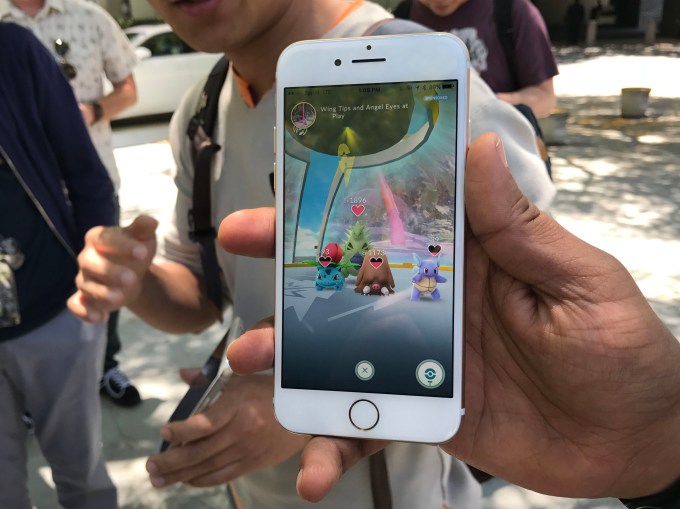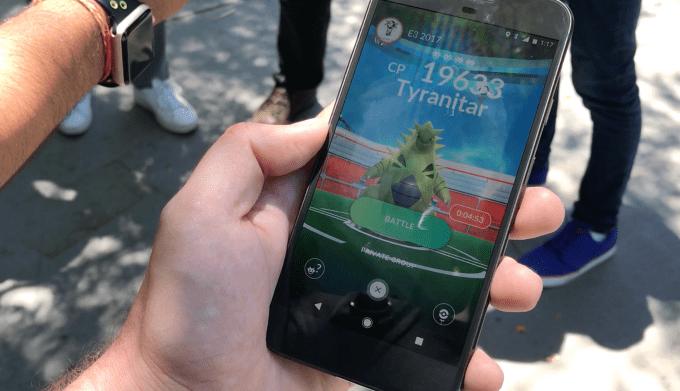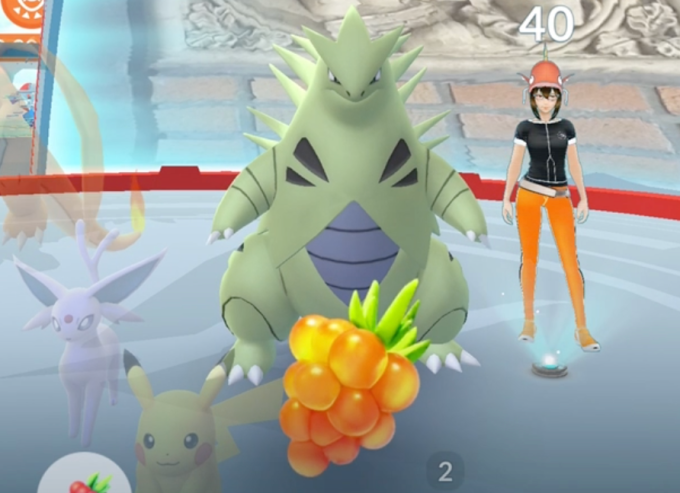Just about a year ago, Pokémon Go came out of nowhere and took over the world. If you lived in any sort of big city, you probably couldn’t go a block without seeing a Go player sprint by, staring at their phone all the while.
The hype inevitably died down, of course. Some people caught everything there was to catch; others stopped as the summer nights turned chilly; others simply got bored and moved on. The game still has a sizable player base — about 65M people, as of April of this year — but for the most part, gone are the overwhelming crowds of people running through the street because someone spotted a Snorlax.
The game’s second summer is just around the corner — and with that in mind, it’s about to get one of its biggest updates yet.
I got to check out an early build of the coming update last week, which the company tells me they’re hoping to roll out this week (with some of the bigger features taking a bit longer to show up for everyone.) Here’s whats new:
New Gyms:

Pokémon Go “gyms” are in-game/real-world spots that players try to claim for their team.
Pokémon Go’s existing gym system sucked. It was confusing at best, and broken at worst. Every gym consistently has all of its slots filled with the same two or three ultra-strong Pokémon, greatly limiting the use of the hundreds of other Pokémon available in the game.
Meanwhile, gyms previously tapped a not-super-intuitive “prestige” system that determined how many Pokémon could be in a gym at once, capping out at ten. Training a gym your team owned would raise the number; repeatedly beating another team’s gym would boot one of their Pokémon out.
With new gyms:
- Only one of each Pokémon will be allowed at a time — no more gyms filled with ten Dragonites, or maxed-out Blissey armies.
- Each gym will now hold up to six Pokémon, with all six slots opening as soon as a gym is conquered.
- You’ll battle Pokémon in the order in which they were added to a gym, instead of fighting them from weakest to strongest.
- All six Pokémon occupying a gym are shown at once, ditching the goofy old interface that showed one at a time
- Pokémon will now lose “motivation” over time and/or whenever they are defeated, temporarily lowering their maximum combat power. When a Pokémon’s motivation hits zero, they leave the gym. Any player on the same team can feed a gym’s Pokémon berries to lift their motivation.
- Each gym now has a badge you can earn and level up from Vanilla -> Bronze -> Silver -> Gold. This is smart — it gives players a new reason to play while traveling beyond the occasional regional Pokémon, collecting distant gym badges as little mementos.
- You can now “spin” gyms like you would a Poké Stop. Once a day, gyms will give you a ‘raid pass’ (assuming you don’t already have one; you can only have one at a time.) What’s a raid pass, you ask? They let you participate in…
Cooperative Raids:

A glowing egg appears on top of a gym, a countdown floating just above it.
The countdown hits zero; the egg hatches. An ultra rare Pokémon emerges — a Tyranitar, lets say. It’s got some insanely high combat power; a Tyranitar we battled during my demo time, for example, had 19,000 CP. If you took it on by yourself, it’d almost certainly wreck everything you threw at it without batting an eye.
Fortunately, you get to work with others (up to 20 players) to take it down. Players from any team can participate in any raid; there’s a bonus to owning a gym when a raid starts (more on that in a second), but it’s not mandatory.
And if you win? You get to catch that Pokémon — or, at least, you get to try. After a battle, you’re awarded a number of premier balls — a special Pokéball that only works in post-raid encounters, and the only Pokéballs you can use there. Your ultra balls do nothing here. The number of premier balls you get (and thus the number of chances you get to try to catch a defeated raid boss) are determined by things like your performance in the battle and whether your team was controlling the gym when it started.
(For the curious: even with nine premiere balls, using new-and-improved golden razz berries, and nailing a few curve balls, I didn’t catch the raid boss Tyranitar. So it’s by no means guaranteed.)
When you first tap into a raid, you’re placed into a public lobby made up of other nearby raiders. Only want to battle with your friends and avoid the randos? You can generate a private lobby code and take on the raid with just your crew.
Raids will roll out over a few weeks (high level players will see them first), starting at sponsored gyms.
Niantic also tells me that they’re playing with the idea of “invitational” raids — a system that’ll reach out to specific “dedicated” trainers (presumably meaning high level players) in a region and invite them to raids only they can participate in. They didn’t want to say too much about that, though. The company also confirmed Legendary Pokémon (uber rare Pokémon that have yet to make an appearance in the game beyond a few hacks/accidental cases) as being potential raid bosses, though they declined to say more.
How much notice will you get before a raid begins? Minutes? Hours? Days? And how often will raids occur? Those questions dramatically alter how raids will feel, and how they’ll play out. They need to be common enough to give people on varying schedules an opportunity to participate and rally their friends, but rare enough to make them feel particularly epic or exciting. Niantic says they’re still “tuning the numbers” there.
New Items:

A couple other new items are being brought into the mix that can only be obtained through raids:
- Rare Candy: to evolve a Pokémon in Go, you need a bunch of that Pokemon’s “candy”… which you get by catching more of that Pokémon. This makes evolving certain Pokémon a total pain, as you need to catch dozens of them. Rare candy, meanwhile, will work for any Pokémon.
- Golden Razz Berries: like standard Razz Berries, these increase the likelihood that your Pokemon will stay in a Pokeball you’ve thrown. These are just considerably more effective. They’ll can completely refill the motivation of a Pokémon in a gym.
- Fast TMs and Charged TMs permanently teach Pokémon a new attack.
A few things that didn’t appear to have changed in this update: the battle mechanics (it’s still all about hammering taps to attack and swiping to dodge), and the Pokemon tracking system (it still focuses mostly on showing Pokemon currently near local Pokestops, versus the distance-based ‘Nearby’ system the game initially launched with that focused on what’s around you). And no, no word of trading or PVP battles yet.
Will this update be enough to rekindle the absolutely insane levels of hype Pokémon Go saw at launch? Of course not. Pretty much nothing could recreate that perfect storm of nostalgia and excitement that caused a few hundred million people to become Pokémon trainers overnight. It’ll get people playing in visible groups again and respark the interest of some people who’ve dropped off, but it’s probably not going to be the overwhelming, server-crashing inundation it saw last summer. And that’s probably for the better.
But it does take smart steps to recreate the feeling of the beginning — of showing up to a place because the game pointed you in that direction, only to end up working with a bunch of strangers to catch some Pokémon. Done right, gym raids will call experienced players together to one spot (and one, that if it’s survived as a Gym to this point, presumably doesn’t mind having Go players show up randomly) and team up for an ephemeral-but-hopefully-fairly-epic experience.
[gallery ids="1504780,1504782,1504783,1504784,1504785,1504786"]